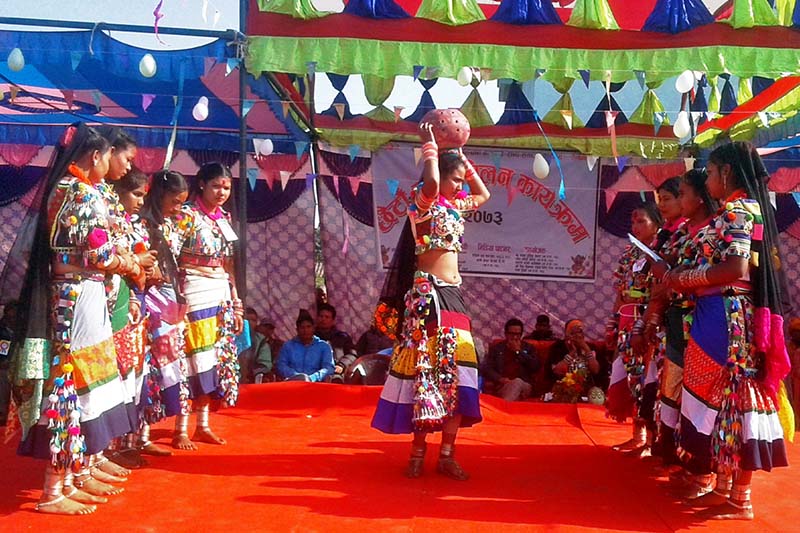Maghe Sankranti observed with religious fervour
Kathmandu, January 15
Various communities across the country observed Maghe Sankranti today.
The day marks the shift of sun’s path from southern hemisphere to northern hemisphere, making the days longer and indicating a gradual decline of winter. Devotees took holy bath in rivers and feasted on yam, khichadi (a traditional dish of rice and various lentils cooked together), chaku (hardened molasses), butter and other delicacies.
The Newar community celebrated the day as Gheu Chaku Sallhu. Apart from relishing delicacies like chaku, yam and meat, sweetmeat made of sesame seeds is also popular in the community.
Likewise, Tharu community celebrated the day as Maghi, which is one of their biggest festivals. Maghi marks the beginning of New Year in Tharu community. Tharu people celebrated the festival eating fish, pork, dhikri (dish made of rice flour), ghongi (water snails) and consuming alcohol.
People from the Magar community, especially in the hilly areas of eastern Nepal like Tehrathum, Ilam, Panchthar, Dhankuta, Sankhuwasabha and Taplejung, marked their New Year today.
According to Mahabharata, Bhishma Pitamah, who had the power to control his own death, happened to choose to die on the day of Maghe Sankranti. Therefore it is believed that those who die on this day achieve Moksha, the ultimate release from the suffering of rebirth.
Meanwhile, five provinces of the country, except for provinces 1 and 3, observed public holiday today. The federal government, however, had removed Maghe Sankranti as a public holiday last year. Province 5 has announced two day public holiday for Maghe Sankranti celebrations.
Tharu women in traditional attire participating in a procession during Maghi festival, in Kathmandu, on Tuesday.






